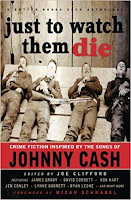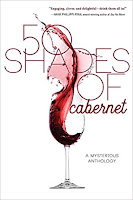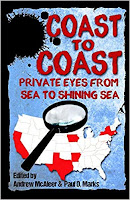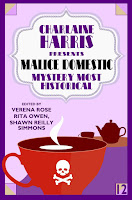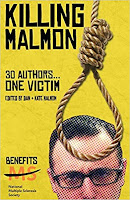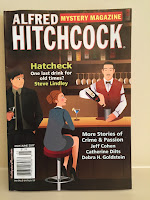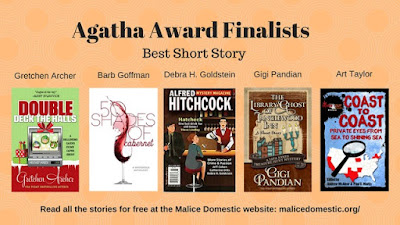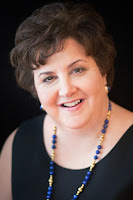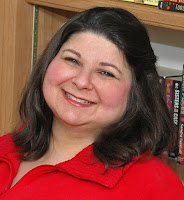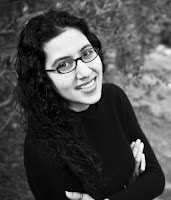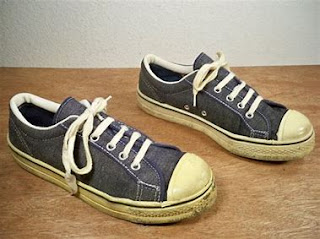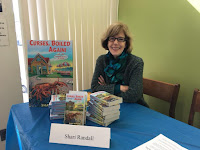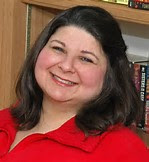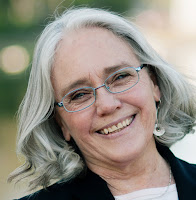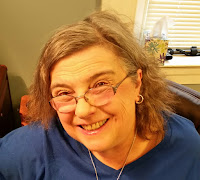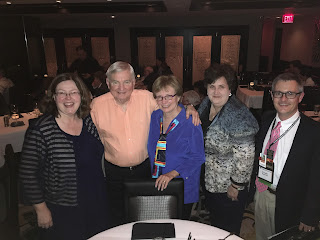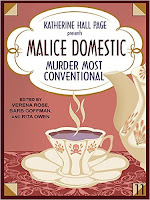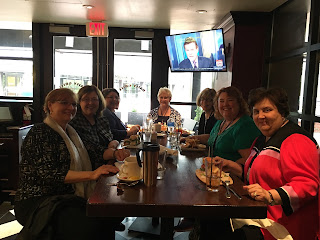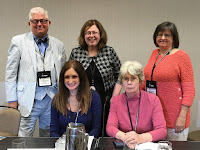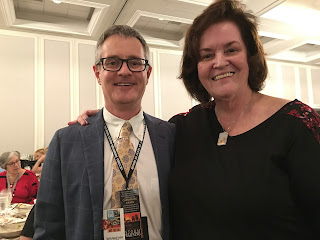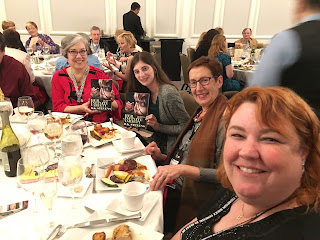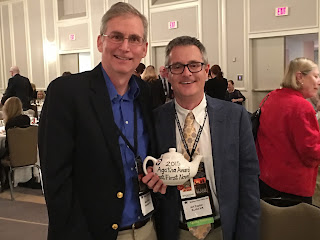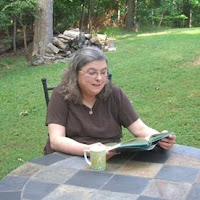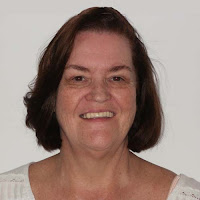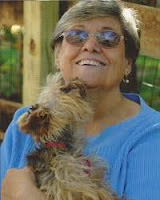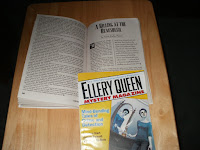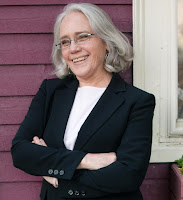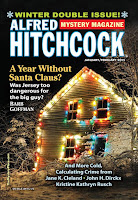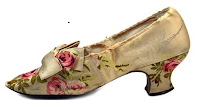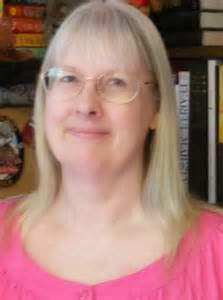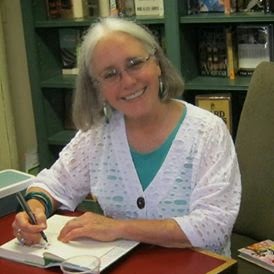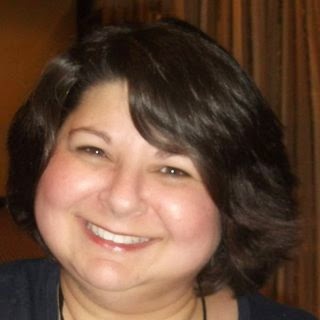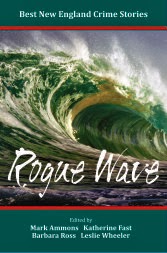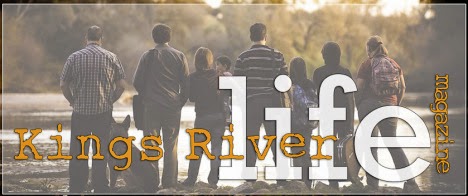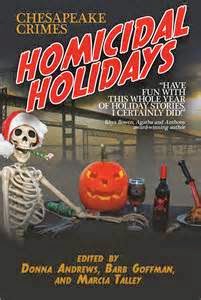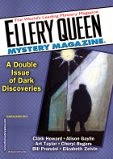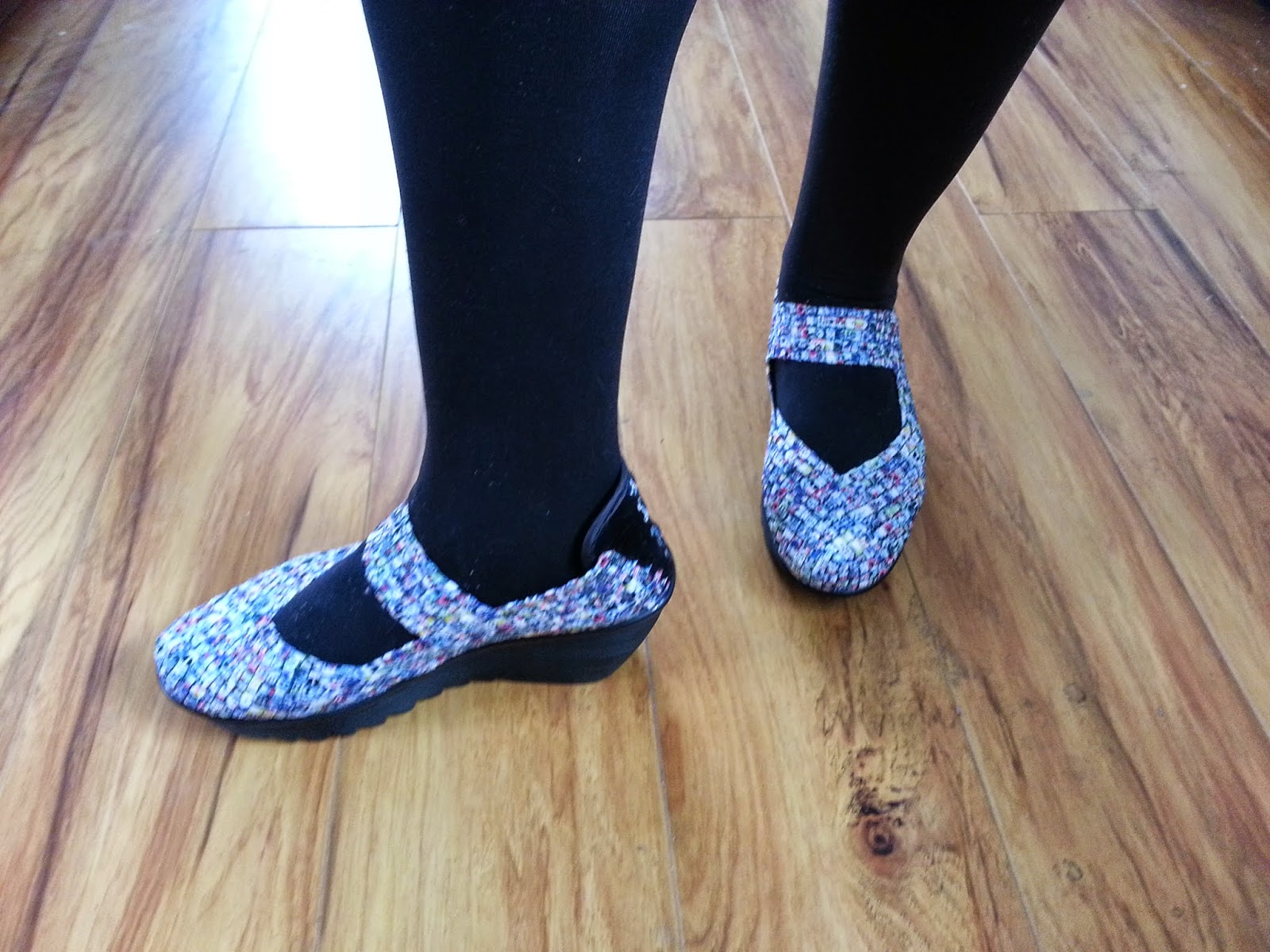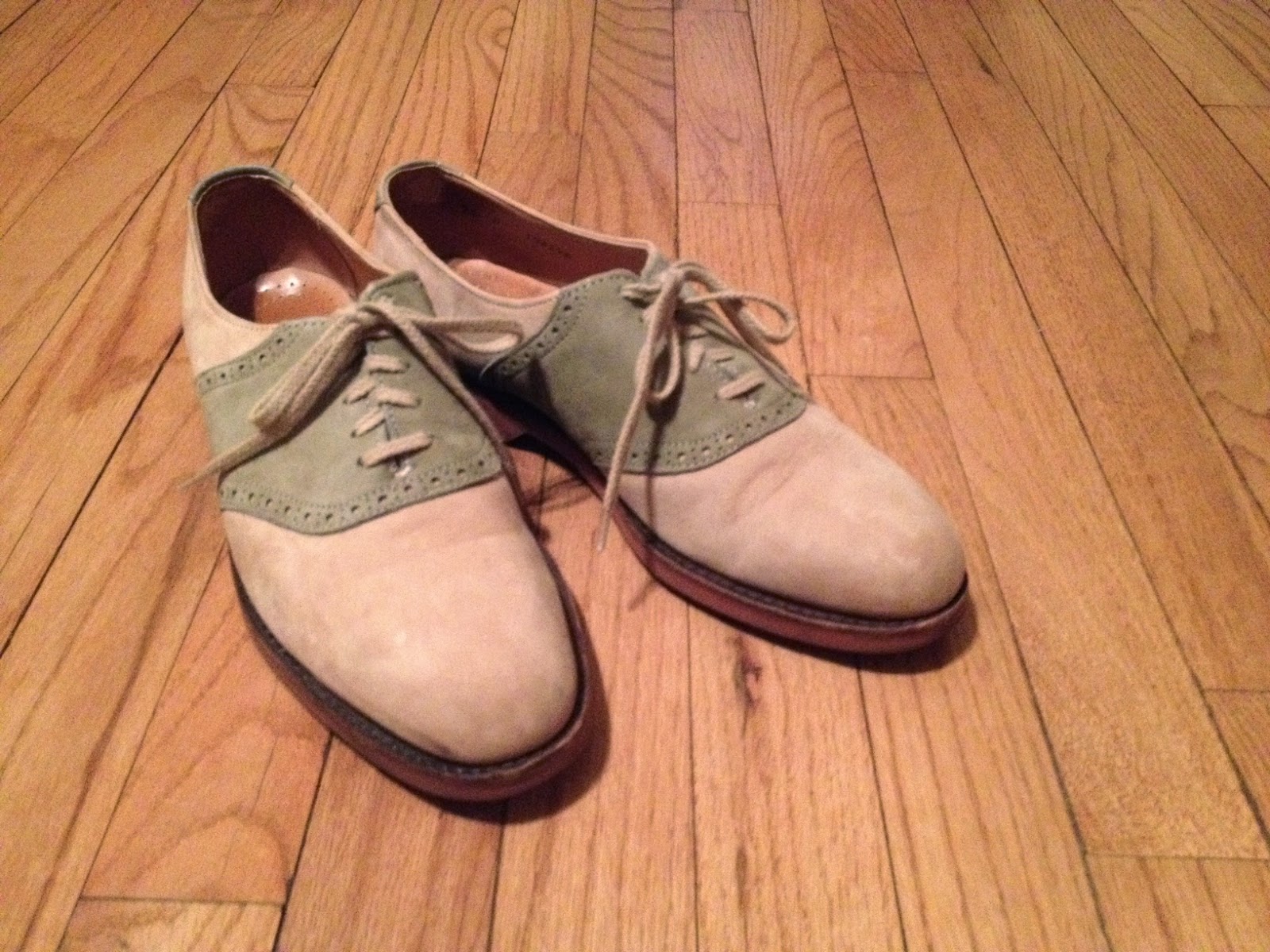Meet the 2018 Anthony Short Story Author Nominees!
Anthony nominees for best short story! Here for your reading pleasure is the
list with links to each story. [Please note: You’ll need to scroll down at some of the links
below to get to the stories.]
Pelletier” by Susanna Calkins, Malice Domestic 12: Mystery Most
Historical: http://www.susannacalkins.com/short-stories.html
Down” by Jen Conley, Just to Watch Them Die: Crime Fiction
Inspired by the Songs of Johnny Cash: https://www.jenconley.net/
by Hilary Davidson, Killing Malmon:
Anyway” by Barb Goffman, 50 Shades of Cabernet:
Ms. Dixie’s Place” by Debra Goldstein, Alfred Hitchcock’s Mystery
Magazine, May/June 2017: http://www.debrahgoldstein.com/otherwritings/night-burned-ms-dixies-place-alfred-hitchcock-mystery-magazine-mayjune-2017/
Ingredient” by Art Taylor, Coast to Coast: Private Eyes from Sea
to Shining Sea: http://www.arttaylorwriter.com/books/a-necessary-ingredient/
Calkins, Jen Conley, Hilary Davidson, Barb Goffman, Debra H. Goldstein, and Art
Taylor, for taking the time to answer a few questions and share their nominated
stories!
story take place?
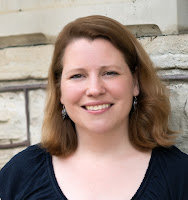 |
| Susanna Calkins |
Madame Pelletier” is set in Tulle, a town in central France, in 1840. It
focuses on the court trial of a “Lady Poisoner,” a woman accused of killing her
estranged husband with rat-paste and truffles.
Jersey, present day. Ocean County is considered central-south New Jersey, known
for its Jersey Shore beaches, but mostly it’s a blue collar/middle class county
on the edge or in the Pine Barrens.
 |
| Hilary Davidson |
Minneapolis. I’ve only had the pleasure of visiting that city once, but I felt
compelled to set the story there because the story is part of the KILLING
MALMON anthology — and Dan and Kate Malmon live in that area.
litigation department of a large Washington, DC, law firm. I don’t specify when
the story takes place. I expect the reader will assume it is a contemporary
story.
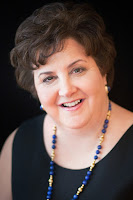 |
|
Debra H. Goldstein
|
Burned Ms. Dixie’s Place” is set in Birmingham, Alabama in the 1960’s, in a
house where they change the sheets more than once a night. The story reflects
Birmingham’s racial, civil, and political strife and their impact on a
particular night on a boy coming of age.
to Coast: Private Eyes from Sea to Shining Sea, which covers (as that
subtitle suggests) a pretty wide geographical area. I was assigned my home
state of North Carolina, and instead of choosing an actual town, I created a
fictional one, a mid-sized Southern town drawing on several places I’ve lived
or known in Eastern North Carolina—Goldsboro, Kinston, and Richlands, among
them. The story takes place loosely in the present, but the main character,
Ambrose Thornton, has immersed himself in some ways, in a mythical past—the
world of the hard-boiled detective stories he lives to read—and the present of
this small town is also steeped at bit in some of that atmosphere, if only
because of Ambrose’s own perspectives driving the story.
encountered in writing your nominated story?
story from a real poisoning case that I had read about when I was working on my
doctorate in history. At the time I had focused on the media accounts of the case,
which were all in French, because I loved the notion of the woman being on
trial in the court of public opinion as well as in the courtroom.
Unfortunately, I had not kept my notes, so I had to go back to the original
source materials, only to realize that my reading knowledge of French has
considerably diminished over the last twenty years. Fortunately, I found a very
detailed contemporary description of the trial in a British medical journal, in
which the authors—both physicians—focused on the details of the poisoning and
the forensics they were able to use. Except for a few interesting details, I
completely changed the story, the characters, and of course provided a twist…
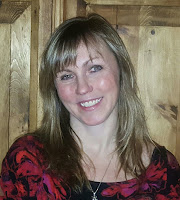 |
| Jen Conley |
challenge for me was writing a first-person male character. This choice can be
difficult to establish when you’re the opposite gender. Readers see the name “Jen
Conley” and assume the first-person narrator is female. It’s just natural for
any reader to do–assume the first-person narrator is the gender of the writer.
I must’ve re-written the first few lines of the story about twenty times. I
also found it challenging to create empathy for a murderer, especially a
murderer who killed my main character’s sister in a horrific and vile way.
KILLING MALMON was that Dan Malmon had to die in every story. (Before you
decide that we’re terrible people to do that to such a nice guy, you should
know that Dan was co-editor of the project, and it raises money to benefit the
National Multiple Sclerosis Society.) After I got over the idea of “killing” my
friend in print, I realized that the biggest challenge was building suspense
when the reader already knew that Dan was going to die. How do you keep the
reader intrigued when they know what’s going to happen? I solved that by
turning the story on its head, so that the man who killed Dan — and got away
with it — suddenly starts writing a confession. The suspense builds around what
led him to commit the crime, and the mysterious reason he needs to reveal the
truth.
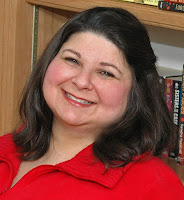 |
| Barb Goffman |
is often a big challenge for me. I’d been asked to submit a story to 50 Shades of Cabernet, so I knew my plot
had to involve mystery and wine. Consequently I did a lot of wine research,
hoping to come across an idea that awakened my muse. I can hear the “research”
jokes now, but my muse isn’t a drinker. I learned there’s a spa in Japan that
uses red wine in its hot tubs. I thought for sure I’d get a plot out of that,
but no. I also learned about festivals celebrating wine and chocolate. Surely,
you’d think I’d devise a plot from that. But no again. It wasn’t until I
learned that people can be allergic to the sulfites in wine that things really
started clicking. Thank goodness!
challenge in writing “The Night They Burned Ms. Dixie’s Place,” was getting the
voices right. Being a white Jewish Yankee middle-aged female, I knew I couldn’t
call on my own experiences and dialect to bring to life a nine-year-old black
male protagonist, his mother, and a southern madame. Each of these characters
had to have a distinct personality and manner of speaking. They also had to
reflect southern society in the 1960’s and, in the case of the child, both
innocence and the way the world was changing. Consequently, it was important
that none of these characters be written stereotypically. Rather, each needed to be treated in a
respectful manner which demonstrated their diversity to the reader. Although the
crime is an important element of “The Night They Burned Ms. Dixie’s Place,”
nailing the characters’ voices is what ultimately engages readers.
 |
| Art Taylor |
Art Taylor: Balancing that
mix of small town and hard-boiled actually posed part of the challenge—but far
from a surprise, it was a challenge that I took as central to what I was doing
here. When my friend Paul D. Marks, the anthology’s co-editor, asked me to
contribute, I almost didn’t do it. I haven’t really written many private eye
stories—and none of the ones I’ve written have been “straight,” so to speak.
But then I liked the idea of crossing the private eye story—traditionally
hard-boiled—with the kinds of regional fiction that have inspired me in other
cases. How can you draw on both effectively? What happens when those “mean
streets” of Chandler’s famous quote are actually dirt roads dotted with
roadside produce stands? And can the class struggles that so often drive
hard-boiled fiction be found in equal measure in the hierarchies of proper
Southern society? Well, that was a challenge I enjoyed stepping up to, and hope
readers have enjoyed as well.
these wonderful authors and their work. Best wishes to them all!
Philadelphia, and lives outside Chicago with her husband and two sons. Holding
a PhD in history, Susanna writes the award-winning Lucy Campion historical
mysteries as well as the forthcoming Speakeasy Murders, both from St. Martin’s
Minotaur. MURDER KNOCKS TWICE, set in Prohibition-Era Chicago, will be out
Spring 2019. “The Trial of Madame Pelletier,” her first published short story,
appeared in Malice Domestic: Mystery Most
Historical (Wayside Press, 2017). Read more about her work at http://www.susannacalkins.com/
Conley’s short stories have appeared in Beat to a Pulp, Just To Watch Them
Die: Crime Fiction Inspired by the Songs of Johnny Cash, Trouble in the
Heartland: Crime Fiction Inspired by the Songs of Bruce Springsteen and
many others. She has contributed to the Los Angeles Review of Books, has
been shortlisted for Best American Mystery Stories and is one of the
former editors at Shotgun Honey. Her Anthony Award nominated story
collection, Cannibals: Stories from the Edge of the Pine Barrens, is
available now. She lives in Brick, New Jersey. Check out her website at https://www.jenconley.net/
Davidson is the author of the Lily Moore series—which includes The
Damage Done, The Next One to Fall, and Evil in All Its
Disguises. She also the author of the standalone thriller Blood
Always Tells and a short-story collection called The
Black Widow Club. Her next novel, One Small Sacrifice, will
be published by Thomas & Mercer in May 2019. Visit her online at http://www.hilarydavidson.com
dog, not necessarily in that order. She’s won the Agatha, Macavity, and Silver
Falchion awards for her short stories, and she’s been a finalist for national
mystery short-story awards twenty-two times, including eleven times for the
Agatha (a category record). Her book Don’t Get Mad, Get Even won the
Silver Falchion for the best collection of 2013. Barb is thrilled to be a
current Anthony and Macavity award finalist for her story “Whose Wine is it
Anyway?” from the anthology 50 Shades of Cabernet. She works as a
freelance editor and proofreader and lives with her dog in Winchester,
Virginia. Learn more at www.barbgoffman.com.
H. Goldstein’s is the author One Taste
Too Many, the first of Kensington’s new Sarah Blair cozy mystery series.
Her prior books include Should Have
Played Poker and 2012 IPPY Award winning Maze in Blue. Debra’s short stories have appeared in numerous
periodicals and anthologies including Alfred Hitchcock Mystery Magazine,
Black Cat Mystery Magazine, and Mystery Weekly. She is president of Sisters
in Crime’s Guppies, serves on SinC’s national board, and is vice-president of
SEMWA. Find out more about her writings at www.DebraHGoldstein.com
Art Taylor is the author
of On the Road with Del & Louise: A Novel in Stories, winner of
the Agatha Award for Best First Novel. He has won three additional Agatha
Awards, an Anthony Award, two Macavity Awards, and three consecutive Derringer
Awards for his short fiction, and his work has appeared in Best American
Mystery Stories. He also edited Murder Under the Oaks: Bouchercon
Anthology 2015, winner of the Anthony Award for Best Anthology or
Collection. He is an associate professor of English at George Mason University.
Check out his website at http://www.arttaylorwriter.com/

